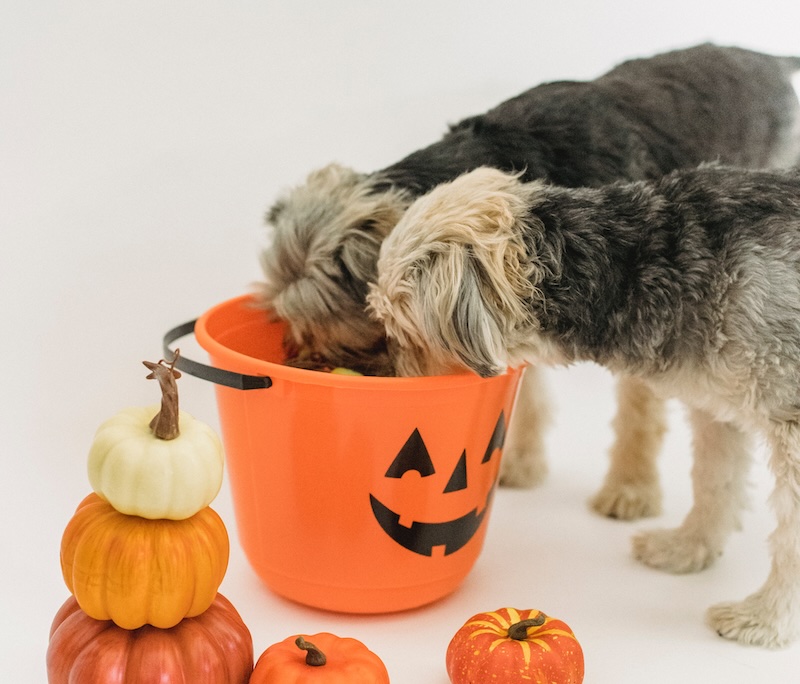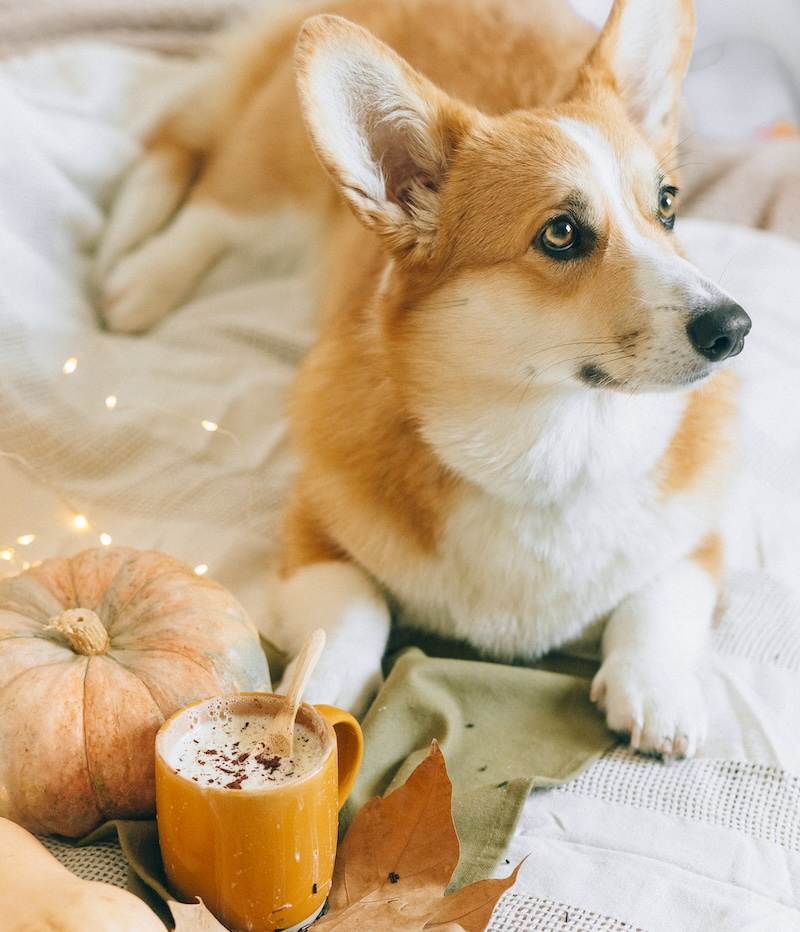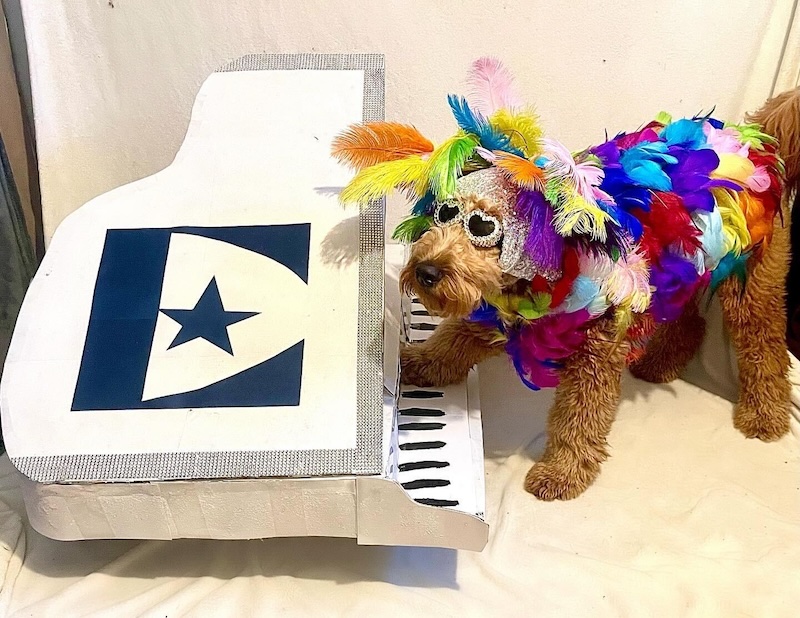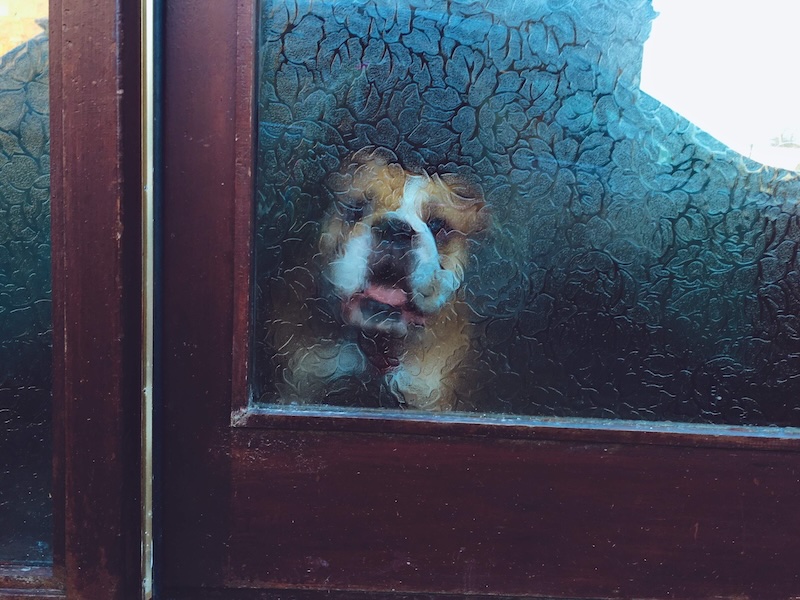Spooky season is here, and our pets want in on the fun—but what’s the best way to keep them safe and healthy throughout the Halloween festivities?
Let’s dive into how to make Halloween more fun than fright for your pup.
My dog got into my Halloween candy stash, what should I do?

It’s every pet parent’s nightmare: You come home from work and find candy wrappers shredded across the floor. Meanwhile, your dachshund is in the corner, sheepishly nibbling a Snickers. Here’s what to do.
1. Try to figure out what candies they ate, and how much
Whenever possible, knowing the type and amount of candy your dog consumed helps veterinarians provide immediate and accurate advice or treatment recommendations.
Some candies are more dangerous than others, for example:
- Sugar-free candies often contain xylitol, a sweetener that is highly toxic to dogs; even small amounts can be life threatening
- Chocolate—especially dark or baking chocolate—can be toxic to dogs
- Hard candy and wrappers can cause choking or intestinal blockage, which could require emergency surgery
Certain other Halloween treats aren’t a guaranteed emergency, but should be avoided. For instance: Candy corn can cause an upset stomach, and is a choking hazard.
Learn more about what foods are toxic to dogs.
2. Check for Symptoms
If your dog shows any of the following signs after you suspect they’ve eaten Halloween candy, they might need medical attention right away:
- Vomiting
- Diarrhea
- Restlessness
- Rapid breathing
- Increased heart rate
- Seizures
3. Call your vet or an emergency clinic
Even if your dog seems fine, it’s still a good idea to consult with a vet or the Animal Poison Control Center.
It might seem like a good idea to make your dog vomit to help them get the toxic food out, but it could be dangerous to try to induce vomiting without professional advice. Always consult with a veterinarian before taking any action.
When you buy a Lemonade Pet policy, you’ll have access to Chewy’s Connect with a Vet service, which allows you to chat with veterinary professionals on any aspect of your pet’s health and well-being, including Halloween-related mishaps.
Keep in mind that this service is a supplement to in-person or virtual vet exams, and the Chewy team cannot prescribe medication or diagnose illnesses.

What fall treats are safe for my pooch?
Autumn brings a bounty of flavors, many of which your dog can enjoy safely, including:
- Pumpkin is packed with fiber, and it’s great for digestion—just make sure to use plain pumpkin puree, not pie filling
- Cooked sweet potatoes or butternut squash is a vitamin-rich treat
- Apples are delish, but don’t forget to remove the seeds and core
- Raw or cooked carrots
- Fresh or frozen peas
Looking for a more specifically Halloween-themed treat for your pup?
There are plenty of store-bought options to choose from—like Turkey & Pumpkin Recipe by Zuke’s Mini Naturals, Spooktacular Snacks from the Lazy Dog Cookie Co., and Ghouly Bites Beef Dog Treats by Barkworthies.
Can my dog have pumpkin spice lattes?

Humans love their pumpkin spice lattes, but the drink likely won’t be safe for your pooch (unlike the cherished Puppucino). Pumpkin spice lattes usually contain ingredients like caffeine, sugar, and certain spices like nutmeg, all of which can be harmful to dogs.
Luckily, it’s pretty easy to whip up a dog-friendly version to let your pup join in on the PSL craze.
How can I make the perfect DIY costume for my dog?

So your pup wants to strut their stuff on Halloween and get a little dramatic. Here’s what to keep in mind as you plan their perfect ‘fit:
- Find your inspo. Let your dog be your muse in the design process. Does their personality and appearance give off Elsa “Let It Go” vibes, or do they have more Big Bad Wolf energy?
- Take measurements. Depending on what items you’re making for the costume, you’ll need specific measurements to ensure a comfortable fit. For example, if you’re making a hat, you’ll need to know things like the distance between their ears, ear length, head circumference, and width of the forehead between the eyes.
- Use safe materials. Opt for soft, non-irritating fabrics—like cotton, fleece, or microfiber. Avoid small, chewable pieces that your dog could easily swallow.
- Sew or assemble the costume, and socialize your dog to the costume parts as you go. Make sure the design won’t restrict movement, vision, or breathing.
- Trial and adjust. Let your pet wear it multiple times before Halloween to make sure they’re comfortable.
Always supervise your pet while in costume to ensure safety. And if they are too scared to wear it, never force them.
How can I create a safe haven for my dog during trick or treating?

The constant doorbell ringing and influx of strangers coming to your doorstep can be stressful for dogs. Here are some tips to help prevent spooking your dog, or the trick or treaters:
- A long walk or play session earlier in the day can help tire out your dog, making them more relaxed during the evening’s festivities.
- Choose a quiet room away from the front door that your dog can stay in with the door closed if possible. Keep them in their crate if it will help them feel more secure.
- If they’ll still have visual access to the trick or treaters, close the blinds or curtains to block out the sight of strangers in costumes, which can be unsettling for some dogs.
- Give them access to their favorite toys, bed, and fresh water.
- Play soft music or white noise, which can help drown out the noise of visitors and calm your dog.
- If you know certain stimuli, like the doorbell, particularly upset your dog, consider sitting outside to hand out candy or placing a sign asking trick-or-treaters to knock softly.
- Check-in regularly on your dog, offering comfort and treats.
- Reward your dog for calm behavior with treats and praise, using positive reinforcement to show them there’s nothing to be afraid of.
Learn more about how you can help your dog with anxiety here.
If you do choose to greet trick-or-treaters, you can keep them on a leash or set up pet-gates or barriers in your home to prevent your pet from running out the door. Even with gates up, keep in mind that some pets can jump or even squeeze through… so the door and your pet should be monitored closely!
Before we fly away on our broomstick…
Even with every precaution, Halloween mishaps can occur. Having pet insurance for your pooch can help turn a potential nightmare into a mere bump in the night.
Click below to get your free Lemonade Pet quote (no tricks included).
A few quick words, because we <3 our lawyers: This post is general in nature, and any statement in it doesn’t alter the terms, conditions, exclusions, or limitations of policies issued by Lemonade, which differ according to your state of residence. You’re encouraged to discuss your specific circumstances with your own professional advisors. The purpose of this post is merely to provide you with info and insights you can use to make such discussions more productive! Naturally, all comments by, or references to, third parties represent their own views, and Lemonade assumes no responsibility for them. Coverage and discounts may not be available in all states.




